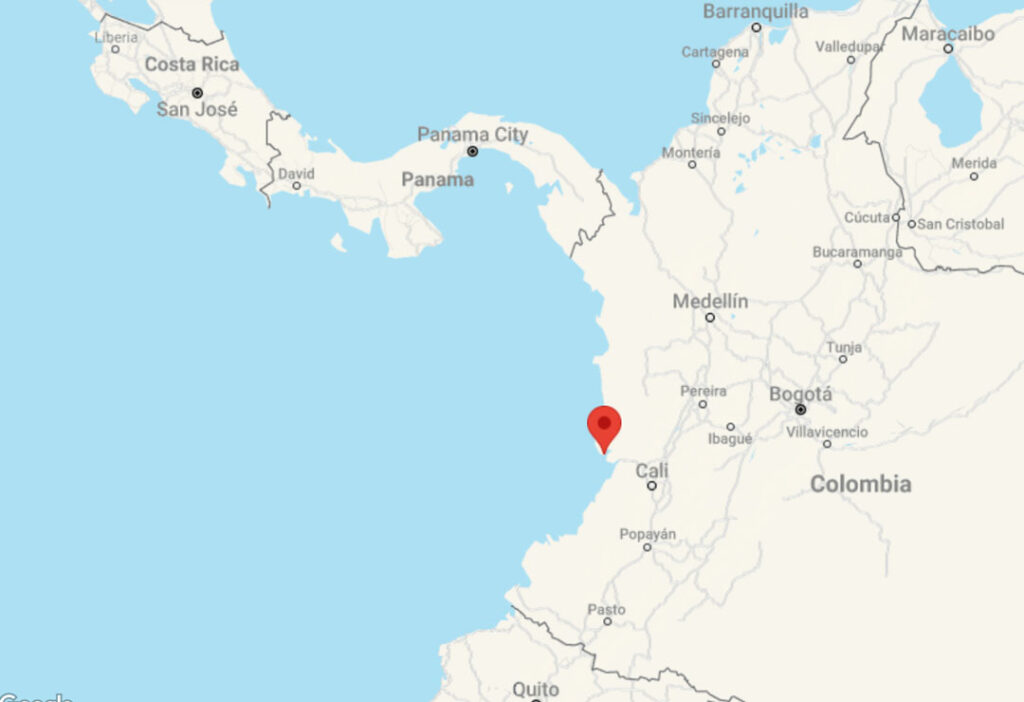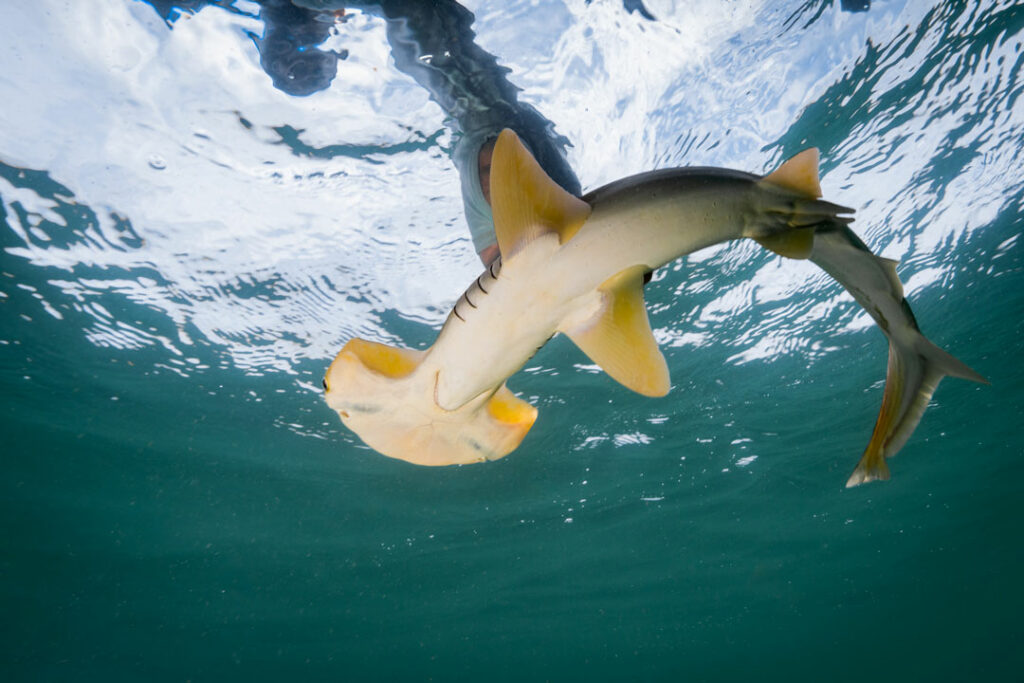The journey to tagging hammerheads
Our journey started in Cali, the third largest Colombian city, which lies only 3 hours by car from the largest port on the Colombia pacific coast, Buenaventura. The one-way road goes through a large mountain chain where we cross many different ecosystems until reaching the tropical rain forests of the biogeographic Chocó, an area of around 75,000 square kilometres on the Pacific Coast, spreading from Panamá to Ecuador. Due to a combination of evolutionary, ecological, climatic, and geologic factors, this region presents the highest biodiversity concentration per area in the world. After spending the night in Buenaventura, we took the earliest boat to Uramba Bahía Málaga, a Colombian National Natural Park established in 2010. The boat ride only took 45 minutes, and familiar faces welcomed us from previous expeditions to this site. However, it took us almost two hours to offload all the heavy anchors, bricks, sacks of cement, acoustic receivers, tagging gear, and supplies. This part of Colombia is very remote, and you must bring everything you need to conduct your research from inland.

National Natural Park Uramba Bahía Málaga, Colombia. Graphic © Snazzy Maps | Google Maps
The first days were spent preparing the mooring for our acoustic receivers and meeting with the communities’ leaders to explain the project to them in more detail to keep strengthening our relationship with them and confirm their support, a critical step for every successful project in this region.
Once everything was in place, we were ready to start our research and meet the sharks we urgently needed to protect. For now, our main study site covers an area of around 10 km from tip to tip. Here, four species of hammerhead sharks are found in good numbers. This is not a minor detail, given that some of these species disappeared from most places throughout their distribution range decades ago. In this area, we have found the Critically Endangered scalloped bonnethead (Sphyrna corona), scoophead (S. media), juvenile scalloped hammerhead sharks (S. lewini), and the Endangered bonnethead shark (S. tiburo). Three of these species are what you can call dwarf hammerheads, with one species maturing at around 50 cm in total length!

A fisher in the remote National Natural Park Uramba Bahía Málaga, Colombia. Photo © Maria Alejandra Herrera
Once our moorings were in the water and our acoustic receivers were ready to start detecting tagged sharks in the murky waters of the Colombian Pacific, we started our tagging activities. The first caught shark was a scalloped bonnethead measuring 97 cm in total length, a whopping size for this species that was previously reported at 92 cm. We are very proud of holding this world record! After five days of fishing, we caught, measured, sampled, tagged, and released 15 small hammerhead sharks, only missing the scoophead shark.

An adult male scalloped bonnethead captured, tagged, measured, and released. It hasn’t been easy to find males and this was the only one we caught during the whole expedition! Photo © Emilio Posada
Our tagging efforts and the deployed acoustic array will allow us to study these four co-occurring hammerhead species’ temporal movement and occurrence patterns to identify priority areas where local no-take zones can be established. We have a lot of work ahead of us, but we are excited to collect these data and work towards conserving some of the most threatened, understudied, and charismatic shark species. We will return to this slice of paradise soon to download the first data and tag more sharks.
